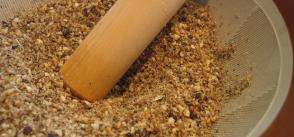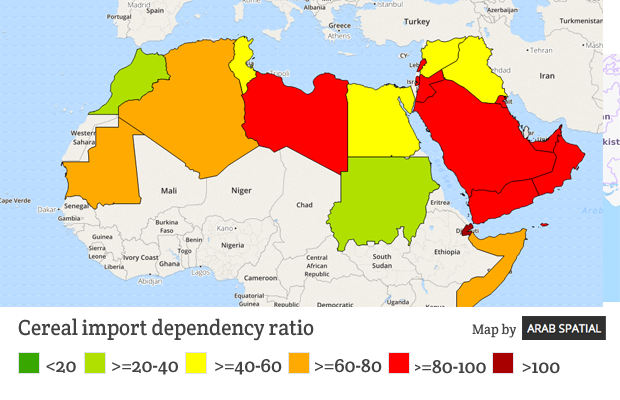
Food security and cereal import dependency
Food security in the MENA region faces many challenges. Among them, cereal import dependency is a key issue that needs an urgent solution through concerted plans and strategies that may also benefit from online instruments and tools.
A few months ago Hilal Elver, UN special rapporteur on the right to food, welcomed Morocco's plan Maroc vert as an example that can inform a regional strategy towards food security.
According to her:
“Morocco’s green plan[...] should be implemented equally across the regions through effective consultation with local populations and improved coordination of services”
The objectives of Morocco’s Green Plan should be met by 2020. Meanwhile "the country has so far been unable to break its dependence on imported cereal (2.8 million tons in 2015-16)", a problem that – as Nadine Katkhuda argues in a post on Ecomena - is common to many countries in the region: according to a report issued in 2009 by the World Bank, the United Nations Food and Agriculture Organization (FAO) and the International Fund for Agricultural Development:
“Arab countries are the largest importers of cereal in the world. Most import at least 50% of the food calories they consume.”
Similarly, food security is a key challenge in Egypt. The country "for nearly a decade has ranked as the world’s leading importer of wheat, an indigenous crop for thousands of years" -says Perrihan Al-Riffai, senior research analyst in the development strategy and governance division at the International Food Policy Research Institute. She adds:
The national development strategy needs to be an integrative exercise that addresses food security at the macro and micro levels as a theme across all development sectors, bilateral initiatives, and programs.
In Tunisia the situation is certainly better. Nonetheless, the problem of food insecurity persists here as well. According to Mahmoud Tnani, in Tunisia:
The heavy dependence on imports aggravated the financial impact during the years of sharp rise in in international prices (2008, 2010 and 2011).
The relationship between import dependency and cereal import is analysed by an interesting interactive map realised by Arab Spatial: scientists, policy-makers and citizens can visualize, compare and monitor a wide-range of indicators on food and nutrition security, poverty and development in 22 countries in the Middle East and North Africa region.
[Interactive map by Arab Spatial]
The years ahead are crucial to meet the objective of ensuring food security across the MENA countries. In her work, Racha Ramadan, assistant professor at Faculty of Economics and Political Science-Cairo University, reminds us that:

Related resources
By 2050, around 9 billion people will need to be fed. Food security is becoming a global challenge, especially for net food importers. Developing Countries, and mainly the African ones are net food importers suffering from food insecurity.
As mentioned above, Morocco’s green plan sets its goal for 2020. More generally,the Compact2025 initiative is expecting to end hunger and undernutrition by 2025: setting the dates for achieving food security has never been so important.
[Title photo by Sheri Wetherell | via Flickr]








